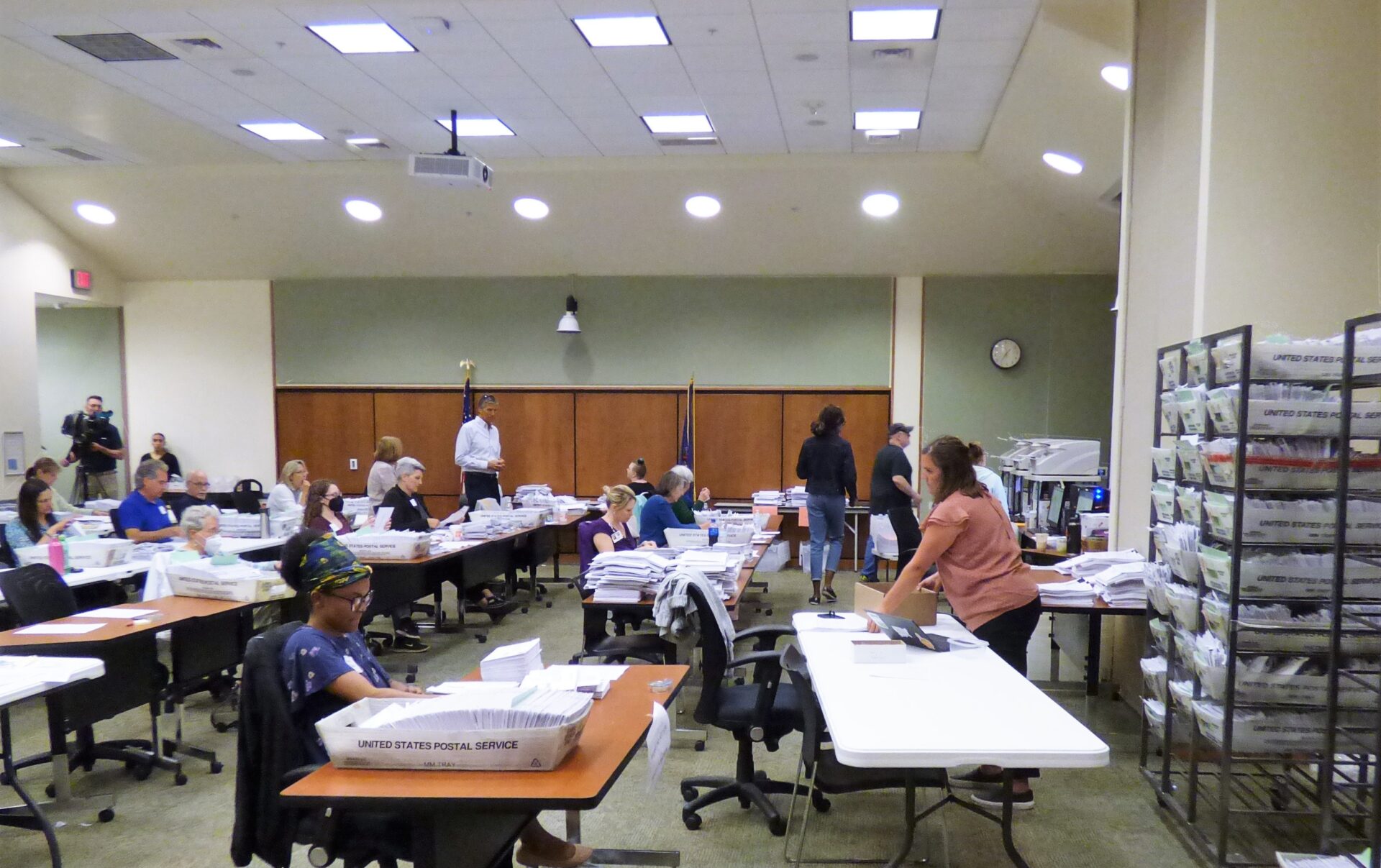Acting Tuesday in their capacity as the Board of Elections, Lancaster County’s commissioners agreed to have the county continue to provide a single-purpose voter registration form to its citizens, rather than a new state form that combines voter registration with an option to request a mail-in ballot.
Election officials across the state, Republicans and Democrats alike, agree the state’s dual-purpose form is a bad idea, the county’s Chief Clerk of Elections Christa Miller said.
“It’s going to cause voter confusion,” she said.
People already are leaving sections incomplete, signing the wrong part and making other mistakes, she said.
Moreover, because registrations and mail ballot applications are handled through separate processes, putting them on the same document complicates things for election administrators, she said.
State officials say they were trying to make things easier for voters, but election administrators say the change was sprung on them by surprise and isn’t well thought out.
They advised the Department of State “to scrap the whole thing,” Miller said. The department declined to do so, although it did accept the bulk of the administrators’ suggestions regarding wording and layout.
Commissioners Josh Parsons and Ray D’Agostino said the new form is the latest example of Gov. Tom Wolf’s administration running roughshod over established law and procedure.
“You have to assume that it’s intentional at this point,” Parsons said.
Commissioner John Trescot agreed the dual-purpose form is problematic, but attributed the state’s creation and promotion of it to the Department of State “doing things in a vacuum” rather than malicious intent.
There’s no way to keep people from downloading the new form from the state’s website, Miller said, but the county can at least limit its use by continuing to provide separate forms itself.
She said it appears the state will discontinue its printing of the old forms, but that the county would be able to print them on its own.
Regardless of which form is used, people are notified if they make mistakes or leave sections incomplete, she said. The forms are mailed back to them and they’re called if they provide a phone number.
2020 election records
In other business, the Board of Elections agreed to retain the county’s November 2020 election records through the end of 2024.
Federal law only requires them to be kept for a 22-month period, which expired Sept. 3. However, they are the subject of multiple Right-to-Know requests for which appeals remain pending, county Solicitor Jackie Pfursich said.
By the close of 2024, those appeals and any related litigation should be done with, although “you never know,” Pfursich said. If need be, she and Miller would seek a second extension, she said.
The records are a mix of paper and digital files, she said, and the county has received about a dozen petitions seeking them. Under state election law and Office of Open Records precedent, they are not disclosable under Pennsylvania’s Right-to-Know law, so county has denied the requests on that basis, she said.
It costs little to keep the records, Miller said, and Pfursich said she hasn’t spent much time to date dealing with the issue.
Still, Trescot said, the costs should be tracked. The ongoing requests are motivated by theories of election fraud that have been thoroughly debunked, and it’s not right for taxpayers to be saddled with costs resulting from “something that has no proof of existence behind it,” he said.






